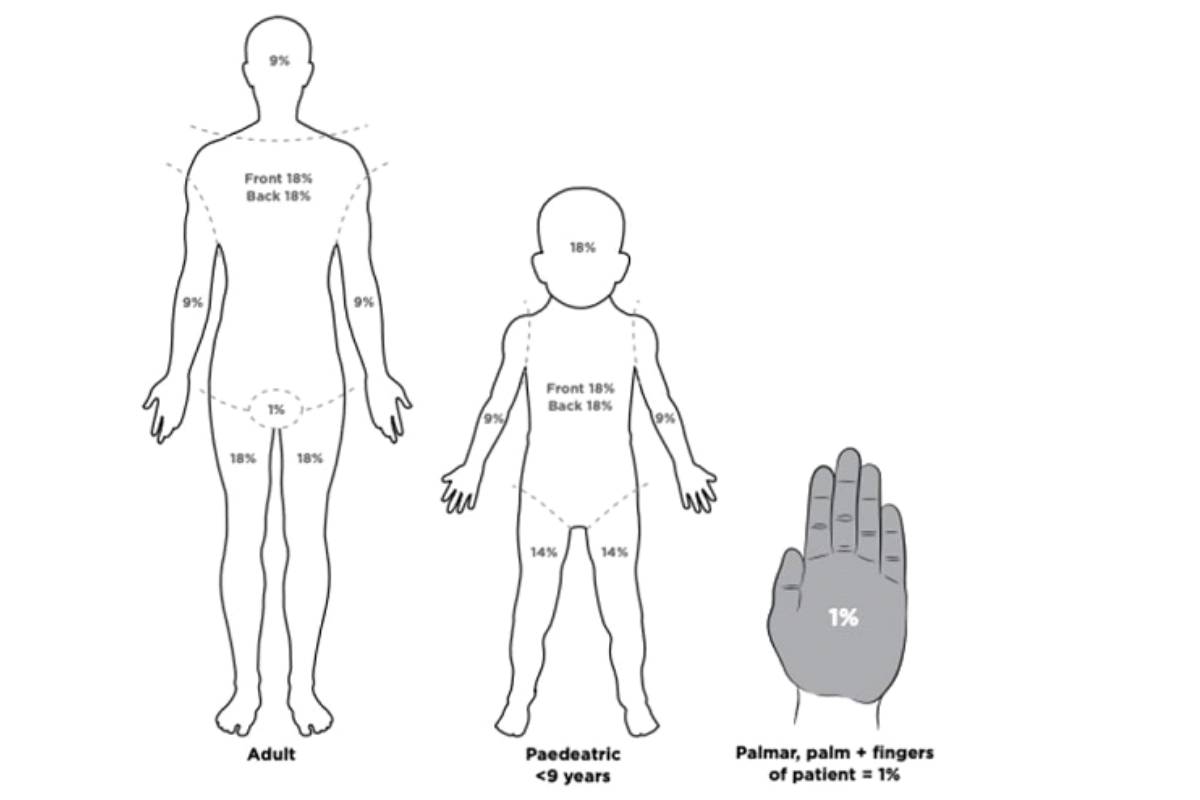Right hospital has a highly specialised Burns unit for the management of acute and chronic Burns victims.It is neceasary that the victims be treated at the earliest in a centre which is equipped with state of art facility to manage acute Burns. Acute Burns patients face a Life threatening situation and they are at a high risk of dehydration , infection and circulatory shock.It is neceasary that the general condition of the patient be stabilized and provide proper fluid management.
Right hospitals has a team of highly qualified Physicians, Intensivists and Plastic surgeons along with a Highly specialised intensive care unit(ICU), operation theatres (OT) , Blood bank and Skin bank for managing these patients.
Scald
Contact burns
Friction
Flame / explosion: product that burned/exploded
Electrical burns
Chemical burns
Sunburn

First aid
Remove jewellery and clothing in contact with burn source
Cool affected area as soon as possible (within 3 hours from time of burn) for 20 minutes with cool running water
Never apply ice and avoid use of hydrogel burn products
Cover burn with plastic sheet along the burn (do not wrap circumferentially)
Do not apply plastic cling film to face (use paraffin ointment)
Do not apply plastic cling film to a chemical burn
Discuss chemical burn decontamination with Poisons Information (Tel: 131126)
Appropriately consented photos of burns prior to dressings are useful for ongoing management
Prevent hypothermia in children
Remove wet clothes/dressings after initial cooling
Try to keep child otherwise warm
Cover the wound and the child after assessment
Children have thinner skin than adults, predisposing them to a deeper burn for any given temperature
Assessment of burn depth is difficult, especially early post injury
Young children are at risk of hypothermia, especially during initial cooling of the burn
Burns are described as epidermal, dermal (superficial/mid/deep) and full thickness
Deep and full thickness Burns take a longer time to heal . It is neceasary that deeper wounds get a proper skin cover to prevent infection early in the course of treatment. Skin bank plays a very important role in managing these burns.
Daily treatment is needed. Wound should be inspected for discolouration or hemorrhage and dressing should be done daily to prevent infection. Antibiotics both topical and systemic is needed to prevent infections and avoid septicemia which is very common in burns injury . Appropriate fluid management and blood transfusion may be needed in major burns.
At RIGHT HOSPITALS we have advanced technologies like HYPERBARIC OXYGEN THERAPY which provides 100% oxygen under increased atmospheric pressure which allows better oxygen delivery to the tissues promoting faster healing.
Skin bank is a facility where skin is taken from an eligible donor and processed and stored under appropriate temperature for upto 5 years. The stored skin can be used for Deep burns, chemical burns, electrical burns and radiation burns .

